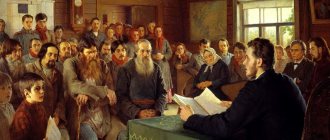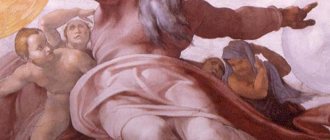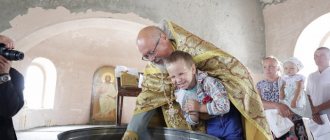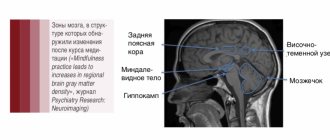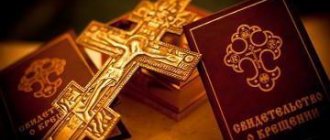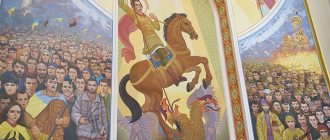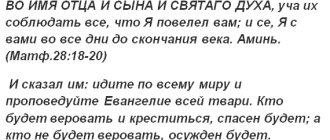About the barren fig tree
In the name of the Father, and the Son, and the Holy Spirit!
Curse of the fig tree. Book miniature from the Arabic Gospel of the 17th century.
On today’s Great Monday, according to the church calendar, we remember how the Lord expelled traders from the Jerusalem Temple and cursed the barren fig tree.
These events, the actions of Christ, seem incomprehensible at first glance, causing confusion and misunderstanding. Why was the fig tree cursed if Jesus came to it when it was not yet time to gather figs?
(Mark 11:13)? But such actions of the Savior, such as cursing the fig tree, turn out to be full of symbolic and spiritual meaning if you look closely at the details.
After his triumphal entry into Jerusalem, Christ spent the night with His disciples in Bethany. In the morning, going to the temple, He became hungry along the way. To satisfy His human needs, Christ never used Divine power, but resorted to human means, rejecting the devil’s temptation to create bread from stones.
When a fig tree covered with leaves appeared in the distance, Christ approached it like a man. The loose leaves of the tree suggested that there would be fruit on the fig tree, because the fig tree produces fruit first and then leaves. Since the time for picking figs had not yet come (see: Mark 11:13) and the early fruits had not yet been picked, one could expect that at least unripe ones would be found on the green fig tree. However, coming closer, the Lord discovered that there were neither green nor last year’s fruits on it. This means that a tree that was untimely covered with leaves was completely barren.
The Monk Ephraim the Syrian is surprised at this: “Why did this sweet Benefactor, Who everywhere showed much in small things and fullness in shortcomings, commanded the fig tree to wither? He healed all human diseases, turned water into wine, made many from a few loaves, opened the eyes of the blind, cleansed lepers and raised the dead to life; He directly commanded only one fig tree to wither..."
And Saint Ephraim himself answers: Christ performed many miracles, but was still crucified. Because of this, some might suspect that His strength was exhausted. To prevent this with the help of a soulless plant, which He dried up, He showed that through the word He could also destroy His crucifiers. As he later said to Simon Peter: Return your sword to its place.
, I can ask the Father, and
He will present to Me more than twelve legions of Angels
(Matthew 26: 52–53). This means that Christ, as a man, was hungry, but as God, He demonstrated His power on the fig tree.
Seeing the unusual miracle, His disciples were surprised: Lord, look, the fig tree that You cursed has dried up.
(Mark 11:21).
To this Jesus said: Have faith in God;
whoever does not doubt in his heart and says to the mountain: “Cast yourself into the sea,” his words will come true (Mark 11:23).
This “moving of a mountain” is an example that for faith free from doubt, nothing is impossible. Therefore, in prayer you must ask for everything with faith in order to receive. But, as Evangelist Mark notes, the condition for the effectiveness of prayer is the forgiveness of the sins of your neighbors: if you do not forgive, then your Heavenly Father will not forgive you your sins
(Mark 11:26). The Lord’s words and deeds did not differ, so we can assume that He cursed the fig tree “not out of malice.” He forgave the Jews who crucified Him. And, therefore, the drying up of the fig tree was an exclusively symbolic matter - as a sign of the Divine power of Christ, the Son of God.
Curse of the Fig Tree
One more question can be asked: why did the fig tree and fig tree become the tree of the curse?
According to the Old Testament, healing powers were attributed to figs; in particular, it was believed that a “layer of figs” healed abscesses (see: Is. 38: 21). The fig tree was one of the seven plants and products symbolizing the wealth of the promised land (see: Deut. 8:8). Fig trees were planted in vineyards (see: Luke 13:6) so that the vine would twine around the tree trunk. The expression “to live under the vineyard and fig tree” allegorically meant peace and prosperity (see: 1 Kings 4:25; 2 Kings 18:31; Micah 4:4; Zech. 3:10).
But in addition to its natural properties, the fig tree also had a symbolic meaning. For the teachers of Israel, the rabbis, she became a symbol of wisdom. One of the treatises of the Talmud recorded the following statement by Rabbi Yochanan: “Like a fig tree, whenever a person touches it, there is fruit on it; so are the words of the Torah - whenever a person pronounces them, there is meaning in them” (Eruvin 54 a, b). The Jewish sage promises fruits from the law of Moses - “at all times.” This seems to be a kind of maximalism, because in winter the fig tree does not produce fruit. When Christ came to a certain promising fig tree in April to look for fruit, He found nothing. Symbolically, He did not find that good fruit that the rabbis promised “at all times.” And in contrast to their claims to maximum wisdom, the Lord declared: “ Let there be no fruit from you forever. ”
"(Matthew 21:19).
Fig tree immediately
dried up to the roots (see: Matt. 21:20; Mark 11:20). A concrete miracle took place, obvious to others. But at the same time, a symbolic and educational miracle also happened.
Six months before His saving suffering, the Lord uttered the parable of the barren fig tree (see: Luke 13: 6-9): that a certain vineyard owner had been looking for fruit for three years, but not finding it, he decided to cut down the barren tree. The owner’s only winegrower begged him: “Leave the fig tree for one more year,” I will dig up and fertilize it. If even after this it does not bear fruit, then you will cut it down.
Exactly six months after the utterance of this parable, a few days before the Jewish Passover, the time of waiting for God expired. Almost four years of the Savior’s ministry have passed, during which He abundantly watered the soil of human hearts with the “living water” of His preaching. But the fig tree of the Jews remained barren. And since the wood of the fig tree is not suitable for any building needs, such a tree, which does not bear good fruit, is cut down and thrown into the fire
(Matt. 3:10; 7:19; Luke 3:9).
We cannot help but be surprised that the Lord came to do only good and improve everything, but He commits destructive actions at least three times. And this is not just like that. He drowned a herd of pigs so that the unbelieving inhabitants of the Gadarene country would come to meet Him at least through material losses. He opened the tombs of the departed saints, so that after Christ’s death on the Cross they would come out of their tombs and appear to many (see: Matt. 27: 52–53). He also withered the fig tree to show that the Jewish people would be rejected for their unbelief in the Son of God.
So, the curse of the fig tree has become a symbol of the rejection of those people who have only the appearance of executors of the law, but in reality do not bear good fruits.
Dooming the Jews to devastation, the Lord predicted that the Kingdom of God would be taken away from them and would be given to a people bearing its fruits
(Matt. 21:43). This “new people” is now us Christians. We have been given the promises of the Kingdom of God, and fruit is now expected of us. But we should ask ourselves: if God rejected the chosen people, rooted in the biblical tradition, for the lack of good fruit, then what will happen to us, to the wild olive tree, which, according to the Apostle Paul, was grafted in instead of the broken branches (see: Rom. 11: 17 ), if we do not bear good fruit?
The gospel story is not only the events of the historical past, but also a symbol, a prototype of what may happen in the future. Every, every, every tree that does not bear good fruit is cut down and thrown into the fire.
. God does not need only the leaves of virtue - external empty piety. God needs real fruits of repentance (see: Matt. 3:8), hearing the word of God and fulfilling it (see: Matt. 13:13).
Following step by step, prayerfully, the days of Holy Week, it would be good for us to ask ourselves frankly: my soul, when the day of harvest comes and the Husbandman comes “in His time” to gather fruit, will He not find only leaves and a dry tree, barren, unfit to be? in His Kingdom? Amen.
How does God's justice differ from human justice?
The little parable of the barren fig tree is part of the teaching given after Jesus was told about the Galileans whose blood Pilate mixed with their sacrifices (Luke 13:1). This incident is unknown from other sources: Josephus, who described the history of Pilate’s relationship with the Jews and Galileans in sufficient detail, is silent about it. However, Josephus describes another episode concerning the rebellion of the Samaritans:
Likewise, the Samaritans could not resist their indignation. They were confused by a certain deceitful man who easily influenced the people in everything. He prompted them to gather with him on Mount Gerizim, which they consider especially sacred. Then he began to assure the Samaritans who came [from everywhere] that he would show them the sacred vessels of Moses buried here. The Samaritans armed themselves, believing this fable, and settled in the village of Tirafane. Here new newcomers joined them in order to ascend the mountain in as large a crowd as possible. However, Pilate prevented this by sending forward detachments of horsemen and infantry, which, unexpectedly attacking those gathered in the village, killed some of them, and put others to flight. At the same time, they also captured many prisoners, and Pilate ordered the execution of the most influential and most prominent of these prisoners and fugitives. (Josephus. Antiquities of the Jews 18, 4, 1. pp. 765–766)
Some scholars believe that the Gospel of Luke mentions this incident, but mistakenly calls the Samaritans Galileans. However, in this case, the Evangelist would be guilty not only of confusing the Galileans with the Samaritans, but also of anachronism: Joseph speaks about this incident after mentioning the execution of Jesus Christ. It took place in the year 35 A.D., and as a result, Pilate was recalled to Rome. Moreover, Joseph does not mention any of the sacrifices mentioned in Luke.
Pilate. Artist Andrey Drozdov
Another story told by Josephus is seen as a possible prototype for Luke's narrative. This story in Joseph precedes the mention of the execution of Jesus Christ and, therefore, occurred during His lifetime:
Pilate then built a water supply system in Jerusalem. For this he used the money of the sanctuary. The water supply was fed by springs located at a distance of two hundred stadia from the city. However, the population opposed this, and many tens of thousands of Jews gathered near the workers engaged in the construction of the water pipeline and began to loudly demand that the governor abandon his plan.
As usually happens in such cases, some of them allowed themselves to insult Pilate with curses. The latter ordered a significant number of soldiers to change clothes, gave them clubs, which they had to hide under their clothes, and ordered them to surround the crowd on all sides.
The crowd, in turn, was ordered to disperse. But since she continued to revile him, he gave the soldiers a conventional sign, and the soldiers set to work much more zealously than Pilate himself would have liked. Working with clubs, they equally hit both noisy rebels and completely innocent people.
The Jews, however, continued to stand firm; but since they were unarmed, and their opponents were armed, many of them fell dead here, and many left covered with wounds. In this way the indignation was suppressed (Josephus. Jewish Antiquities 18, 3, 2. P. 763).
However, this story has even less in common with Luke's mention of the Galileans than the story of the Samaritan rebellion. It can be assumed that in a situation of general instability and constant resistance of the inhabitants of the occupied regions to the Roman authorities, such incidents arose more than once, and the one mentioned by Luke is one of the many such cases. The fact that Josephus does not mention it does not mean that it did not actually take place. The image of Pilate as a cruel Roman prefect, who does not hesitate to shed blood and does not respect what is sacred to the Jews, fully corresponds to his description in Josephus.
The expression that Pilate mixed the blood with their sacrifices indicates that the episode described in Luke occurred at the time when the Galileans were making sacrifices. The slaughter of sacrificial animals took place in the Temple of Jerusalem. We are talking, therefore, about a group of pilgrims from Galilee who came to Jerusalem to make sacrifices, and there during the sacrifice for some reason they were killed by Pilate’s soldiers. Their blood mixed with the blood of the sacrificial animals. It is obvious that the incident occurred shortly before it was told to Jesus: the story was presented to Him as fresh news.
The Evangelist says nothing about who the people who told Jesus about the incident were. Judging by the reference to them "coming", it is likely that they were either eyewitnesses to the event, or came from where they had heard about the news from eyewitnesses. Perhaps those who came were from among the scribes and Pharisees who wanted to see how Jesus would react to the news. They probably expected Him to either condemn Pilate’s act or give some kind of explanation for what happened based on the generally accepted idea of Divine justice.
Jesus, however, does not give any assessment of the actions of the prefect. As for Divine justice, He shows that it cannot be measured by the standards of human justice, based on the principle of adequate retribution: there is no direct correspondence between a specific sin and a specific retribution (Léon-Dufour X. Life and Death in the New Testament. The Teachings of Jesus and Paul (San Francisco, 1986), p. 7). From this thought, expressed in the form of a question, Jesus moves on to the main theme of His sermon. We remember that His preaching began with a call to repentance (Matthew 4:17; Mark 1:15). The story of the untimely death of the Galileans becomes a reason for Him to once again call those who remain alive to repentance:
Do you think that these Galileans were more sinful than all the Galileans, that they suffered so much? No, I tell you, but if you do not repent, you will all perish in the same way. Or do you think that those eighteen people on whom the tower of Siloam fell and killed them were more guilty than all those living in Jerusalem? No, I tell you, but unless you repent, you will all perish in the same way (Luke 13:2-5).
John the Baptist used the image of fruit trees to convey the same truth
The Bible tells us this:
When John saw many Pharisees and Sadducees coming to him to be baptized, he said to them: You brood of vipers! who inspired you to flee from future wrath? create fruit worthy of repentance and do not think of saying to yourself: “We have Abraham as our father,” for I tell you that God is able to raise up children for Abraham from these stones. Already the ax lies at the root of the trees: every tree that does not bear good fruit is cut down and thrown into the fire. (Matthew 3:7-10)
As we see, in this case, the fruit of the tree carries within itself the image of true repentance, which brings good deeds. May God save us from the fate of those who refuse true repentance and therefore fall under curse and punishment. Translation: Moses Natalya
Tower of Siloam: death does not overtake only the most sinful
The story of the fall of the Tower of Siloam is another incident about which nothing is known from other sources. Perhaps this tower was part of the fortifications that fenced Jerusalem, for example, one of the towers that formed part of its ancient walls. According to Josephus, the city was surrounded by a triple wall. The most ancient of the walls “was difficult to overcome due to the abysses that surrounded it and the hill on which it was built that towered above the latter.” It began “in the north at the so-called Hypic Tower... and ended at the western gallery of the temple.” It went in the other direction from the same point, passed by the Siloam spring and ended at the eastern gallery of the sanctuary (Josephus. Jewish War 5, 4, 1–2. pp. 1109–1110).
Apparently, one of the towers of this wall, located near the Siloam spring and pool, which is mentioned in the Gospel of John (John 9: 7, 11), collapsed and caused the death of eighteen people. Again, the event probably occurred shortly before Jesus mentioned it.
Both events - the death of the Galileans and the death of eighteen people under the rubble of the tower - serve as an occasion for Jesus to remind him of repentance and the fact that death awaits every person. In doing so, Jesus refutes the popular belief that sudden or accidental death is punishment for sins. Those who perished, He says, were no more sinners than those who survived. But their death should be a warning to people who do not bear the fruits of repentance.
The text where this incident is described tells us the following:
And leaving them, he went out of the city to Bethany and spent the night there. In the morning, returning to the city, he became hungry; and seeing a fig tree along the road, he approached it and, finding nothing on it except some leaves, said to it: Let there be no fruit from you henceforth forever. And the fig tree immediately withered. Seeing this, the disciples were surprised and said: How did the fig tree immediately wither? Jesus answered and said to them, “Truly I say to you, if you have faith and do not doubt, you will not only do what was done to the fig tree, but if you also say to this mountain, “Be taken up and thrown into the sea,” it will happen. and whatever you ask in prayer with faith, you will receive. (Matthew 21:17-22)
According to this text, the Lord Jesus gave the disciples a lesson in faith. The New Testament presents us with two lessons that He taught His disciples earlier, and which He now reminds us of once again. So let's see...
Does God really give us only a year to correct ourselves?
The teaching of Jesus breaks several stereotypes characteristic of the Old Testament idea of how the relationship between God and people is built: a) for the sins of one person or group of people, God can punish a larger number of people or even an entire nation; b) sudden death befalls sinners as punishment for their sins, and the righteous must be delivered from it; c) the death of innocent people appeases God (as was the case with the sons of Levi, who shed the blood of their brothers on the orders of Moses).
Drawing by Natalia Dorenkova
At the same time, the parable of the barren fig tree shows that God’s patience is not limitless: sooner or later a person will have to give an account of his deeds, of the fruits that he bore or did not bear. The waiting time for these fruits in the parable corresponds to the extra year that the barren fig tree receives. If this year, during which the vinedresser takes special care of it, does not help it bear fruit, it will be cut down.
The year allotted to the fig tree is the entire period of time between the First and Second Coming of the Son of God. During this time, the Son of God, through the Church he created on earth, will lead people along the path of repentance, showing mercy and patience towards them:
Repentance is a medicine that destroys sin; it is a gift from heaven, a wonderful power, by grace conquering the power of laws, why it does not reject the fornicator, nor drives away the adulterer, nor the drunkard, nor the idolater, nor the slanderer, nor the proud, but all changes...
When God is patient with sinners, He has a dual salvific goal: on the one hand, He seeks salvation for them through repentance, and on the other hand, He prepares a good deed for their descendants, who will succeed in virtue.
God, I repeat again, is long-suffering, so that the sinner himself repents, and does not close the path to salvation for his descendants, because, although the sinner himself remains unrepentant, God often spares the root in order to preserve the fruits, and often... corrects the root itself; and when the latter is subject to final damage, then God delays the punishment, waiting for others to be saved through repentance (John Chrysostom. Conversations on Repentance 7 (PG 49, 323–324). Russian translation: p. 359).
God's patience has no limits. However, in relation to humanity, it acts within the time frame of human history, and in relation to each individual person - within the limits of his life. However, the final outcome of each person’s life does not depend only on God. To a large extent, it depends on the will and choice of a person - on whether he will follow Him, whether he wants to do His will and live according to His commandments.
The title, article announcement and subheadings are given by the editors
This is a fragment from a new book by Metropolitan Hilarion of Volokolamsk - the fourth volume in the six-volume series “Jesus Christ. Life and teaching." The fourth volume of the series is devoted to the parables of Christ.
